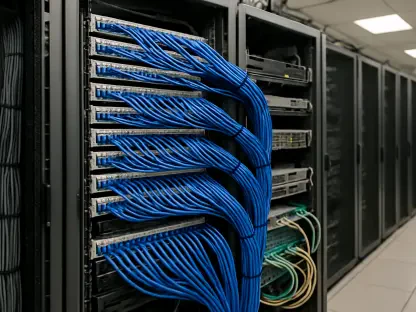In the ever-evolving landscape of camera and lens control technology, the introduction of the Arri network interface adapter NIA-1 represents a significant leap forward. This innovative device seamlessly bridges the gap between modern IP workflows and traditional LBUS-based systems, marking a vital advancement for both cinematic and live broadcast productions. At the core of the NIA-1’s transformative impact is its integration of Ethernet connectivity into the Arri Electronic Control System (ECS), facilitating remote operation, multi-device configurations, and expanded compatibility with a range of third-party cameras. By enabling these capabilities, Arri’s NIA-1 effectively enhances the flexibility and reach of production environments, revolutionizing how professionals approach camera control.
The NIA-1 is equipped with robust connectors for LBUS, Ethernet, and USB-C. These connectors are complemented by a user-friendly touchscreen interface that provides detailed statuses for each connection. Notably, control over the device can be exerted via any networked device through a simple web interface, offering unprecedented accessibility. This feature, combined with the introduction of network channels, allows for an effortless IP network setup. The NIA-1 automatically manages complex configurations yet also supports manual options for users seeking more advanced network integration. Together, these elements embody Arri’s commitment to streamlining operations while maintaining a high degree of customization for its users.
Expanding Compatibility and Simplifying Setups
One of the NIA-1’s standout attributes is its capability to extend control over third-party cameras, effectively broadening its ecosystem. This functionality simplifies setups by eliminating the necessity for multiple cables and allowing for comprehensive camera control through a single interface. Such simplification is particularly beneficial in environments where efficiency and precision are paramount. The device features a rotary release adapter, promoting secure camera mounting while providing quick-release capabilities. On initial release, the NIA-1 is compatible with Blackmagic URSA Cine and Sony Burano cameras, with planned software updates promising to extend this compatibility to Sony Venice models.
The versatility of the NIA-1 is further evidenced in its practical applications, such as enabling remote lens and camera setting adjustments over IP networks. This capability is invaluable in a variety of filming scenarios, including underwater shots, crane operations, and motion control setups. The connectivity options available to the NIA-1, which include Ethernet and fiber-optic cables, facilitate a range of possibilities in terms of distance and location. By allowing seamless remote control, the NIA-1 supports innovative shooting techniques that previously required more cumbersome and restrictive setups, thus advancing the frontiers of what’s possible in film production.
Enhancing Live Broadcast Capabilities
In the realm of live broadcasts, the NIA-1 serves as an essential component, particularly when paired with the Arri Alexa 35 Live – Multicam System. Through the use of a secondary Ethernet tunnel, the NIA-1 enables precise real-time control over large spans, an essential feature in dynamic live broadcast environments. Multi-camera configurations, such as those required for 3D rigs or beam-splitting for infrared capture, are notably enhanced. The NIA-1 allows for synchronized lens and camera control across multiple devices, accommodating various lens types and focal lengths. Furthermore, its compatibility with Arri CSS products, like the 360 EVO stabilized remote head, promotes seamless integration with ECS tools.
As the landscape of live broadcasts continues to evolve, the NIA-1 stands as a beacon of innovation, reflecting the overarching trend toward optimizing workflow and enhancing capability. By maintaining flexibility and ease of use for professionals across diverse setups, the NIA-1 offers a cohesive and nuanced approach to modern filmmaking needs. The device’s ability to integrate complex systems into a single streamlined interface exemplifies a shift toward more efficient and adaptable production solutions, allowing professionals to focus on creativity and content quality.
Conclusion: A Forward-Thinking Approach to Filmmaking
In today’s rapidly advancing realm of camera and lens control technology, the Arri network interface adapter NIA-1 marks a notable progression. This groundbreaking device perfectly connects contemporary IP workflows with traditional LBUS systems, creating an essential development for both cinematic and live broadcast productions. Central to the NIA-1’s efficacy is its incorporation of Ethernet connectivity into the Arri Electronic Control System (ECS). This integration allows remote operation, multi-device setups, and greater compatibility with various third-party cameras, enhancing the adaptability and capability of production environments. Through these enhancements, the NIA-1 transforms camera control for professionals.
The device features robust connectors for LBUS, Ethernet, and USB-C, paired with a user-friendly touchscreen that displays detailed connection statuses. Control is accessible from any networked device via a straightforward web interface, offering remarkable accessibility. Network channels enable effortless IP network creation, with automatic management of complex setups and manual options available for advanced users. These features exemplify Arri’s dedication to simplifying operations while ensuring high customization for users.









